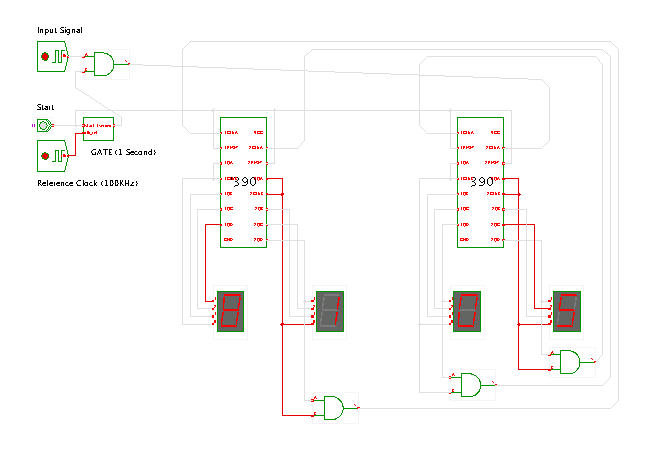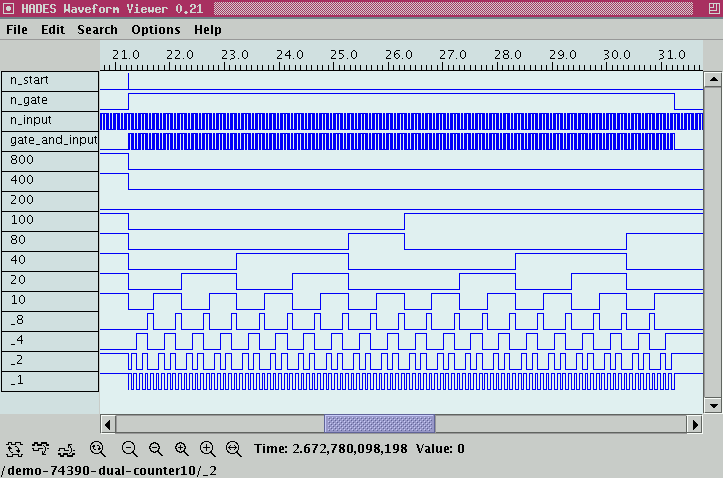

 |  |
 DescriptionA four-digit frequency counter
built from TTL-series 74390 integrated circuits.
We use a clock generator component to provide the input signal
whose frequency should be measured.
Use the property sheet of the upper-left clock generator
(popup menu, edit component) to change the clock period.
Click the 'start' switch (or press the 's' bindkey)
to start a measurement.
DescriptionA four-digit frequency counter
built from TTL-series 74390 integrated circuits.
We use a clock generator component to provide the input signal
whose frequency should be measured.
Use the property sheet of the upper-left clock generator
(popup menu, edit component) to change the clock period.
Click the 'start' switch (or press the 's' bindkey)
to start a measurement.
As frequency is defined as 'pulses per second', it is sufficient to just count pulses during one second (or any other time interval) to measure the corresponding input frequency. To this end, a 'gate' component is used to limit the counting of input pulses to a time interval of known length. Obviously, when the time interval is exactly one second, no additional scaling is necessary, and the final counter value directly corresponds to the frequency of the input signal.
Pressing the 'start' button first resets the 4-digit decimal counter; it also initializes and starts the output pulse from the 'GATE' subdesign. This subdesign uses the reference clock of 100 KHz to create a single 1-second output pulse. (Changing the reference clock also changes the output pulse duration proportionally). The AND-gate masks the input signal to the 'GATE' pulse duration.
The following image shows typical example waveforms during a measurement:

See the next applet for the internals of the GATE subdesign which is also built from 74390 components. The idea is to create a highly accurate pulse duration in the range of seconds by counting thousands (millions) of short pulses, instead of trying to create a single pulse of the required length. While the latter is very difficult with electronical components, a cheap (temperature-stabilized) quartz-oscillator can be used to generate a very precise signal in the few-MHz range.
Run the applet | Run the editor (via Webstart)